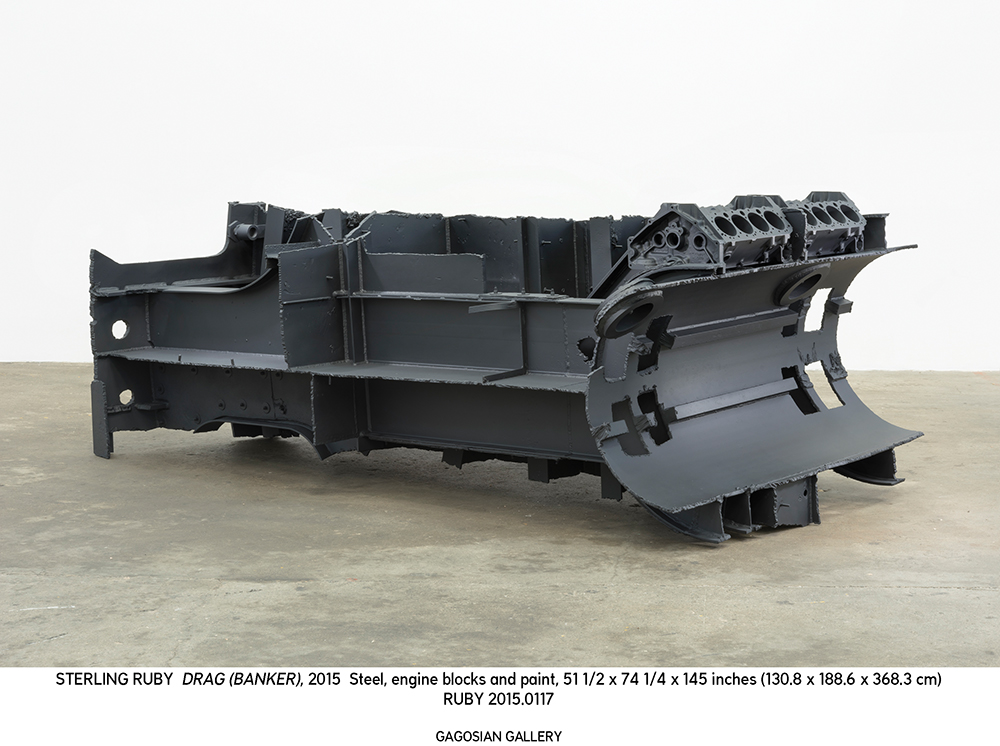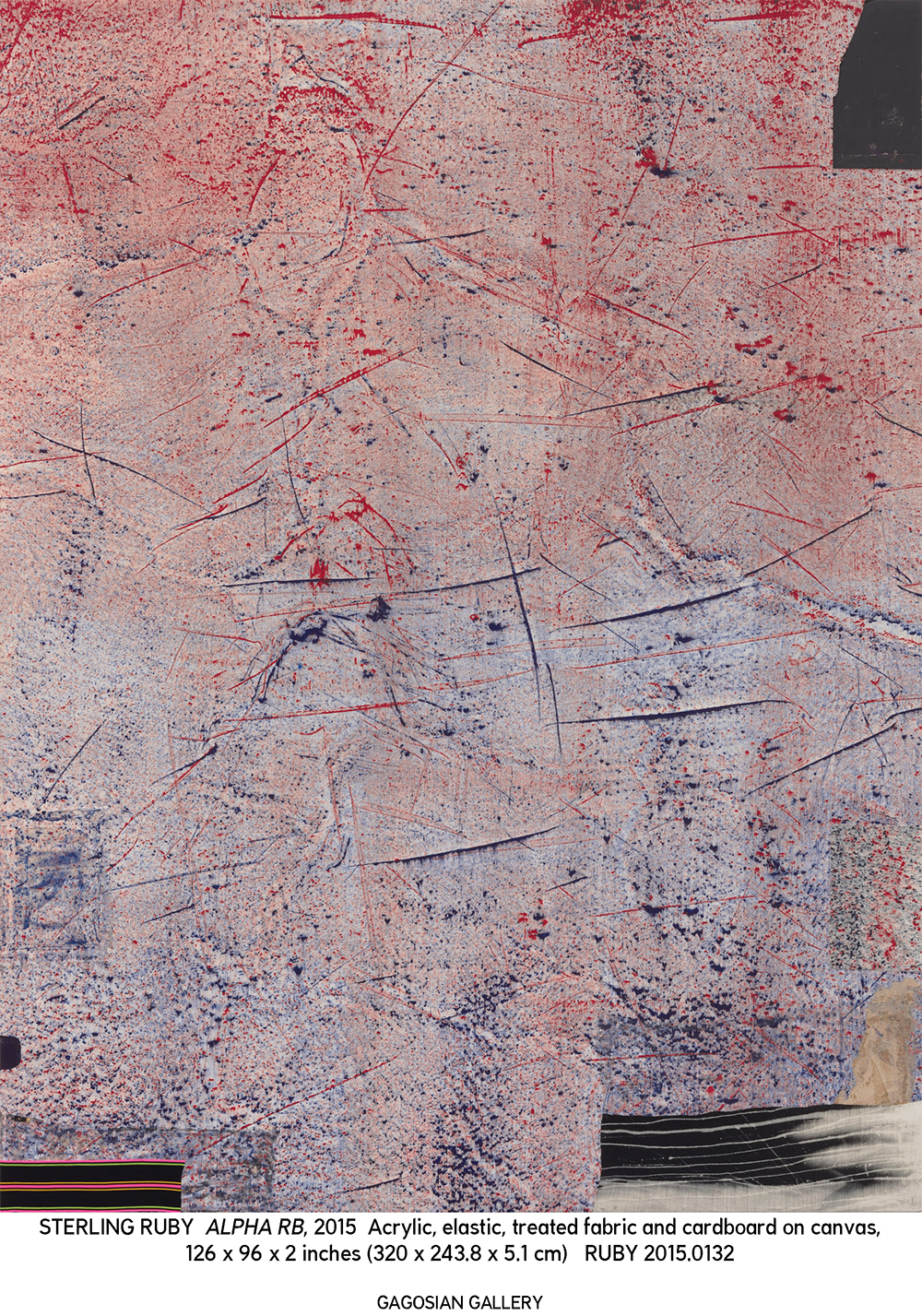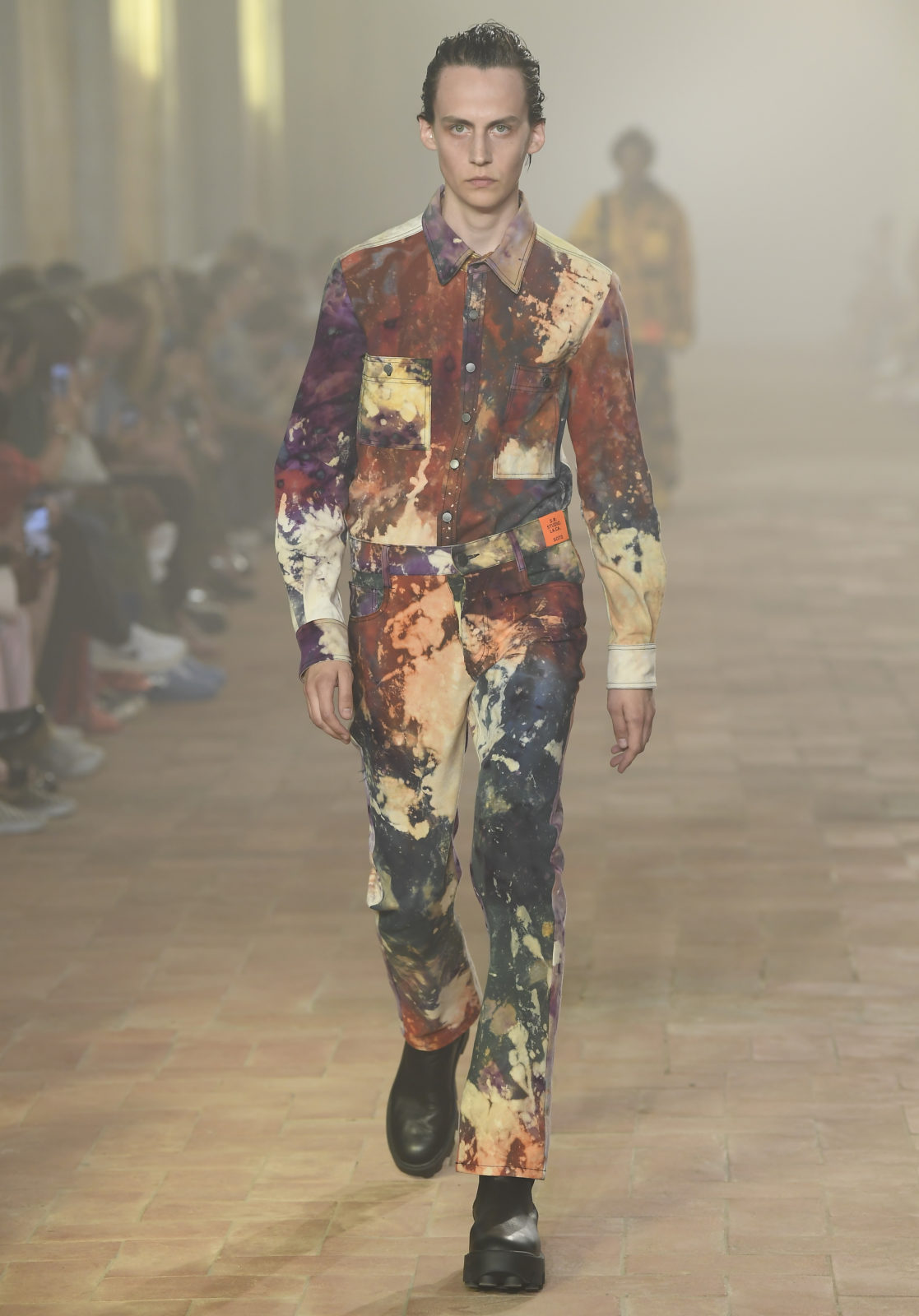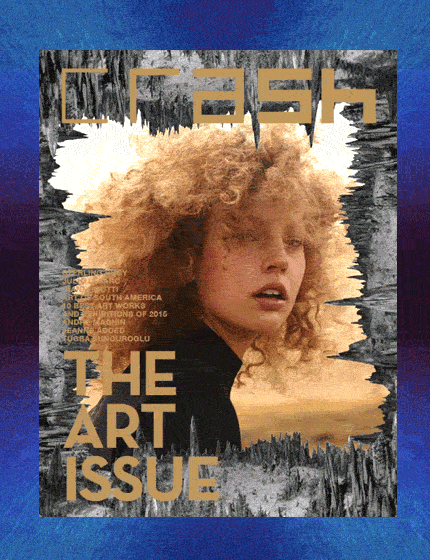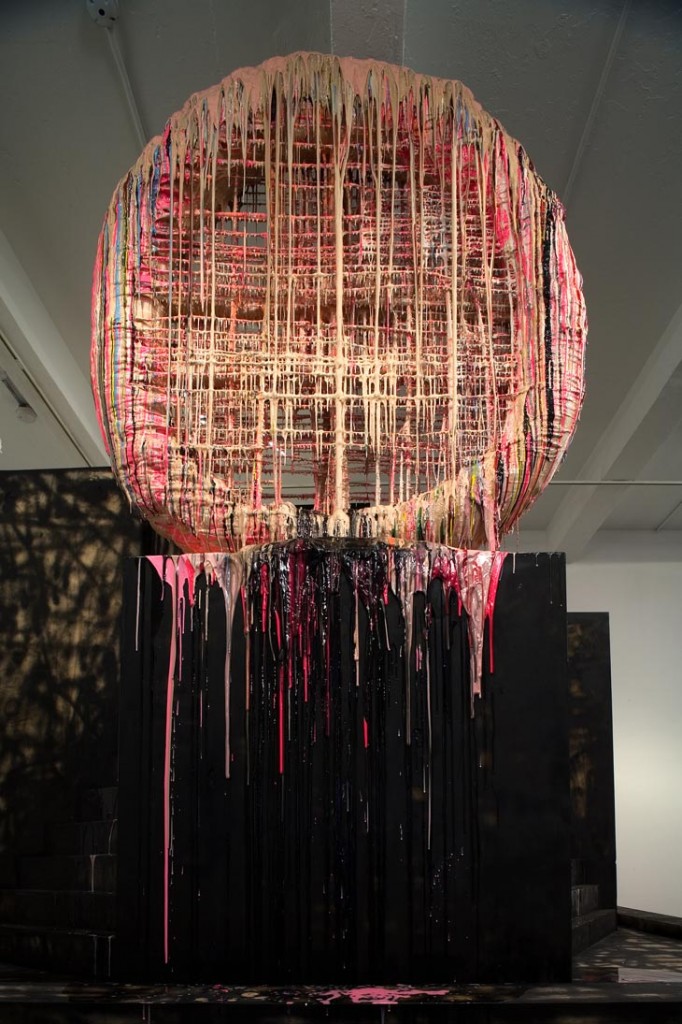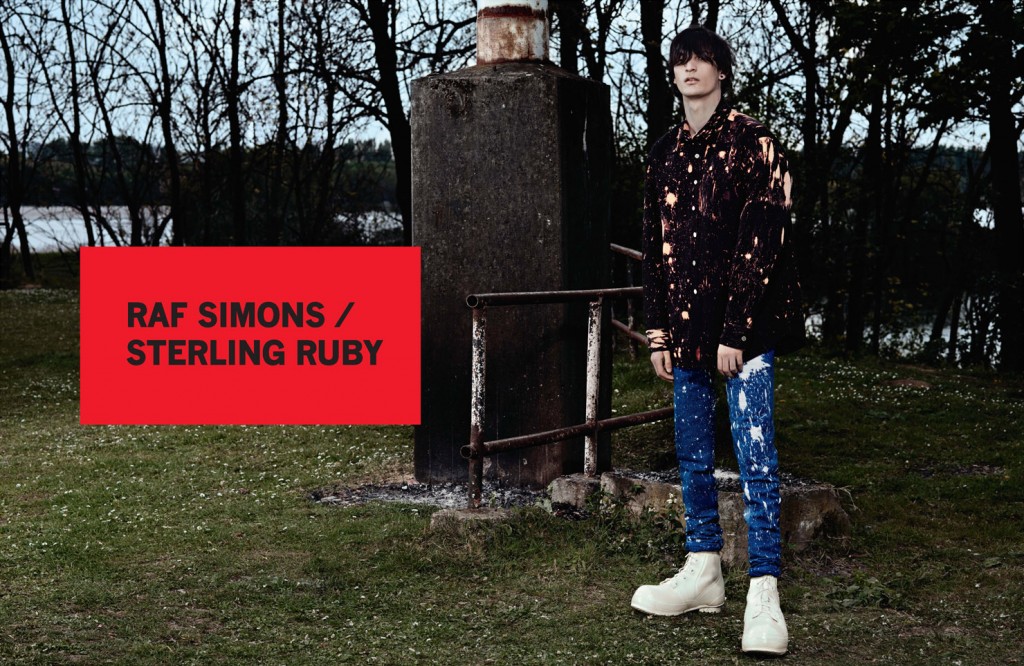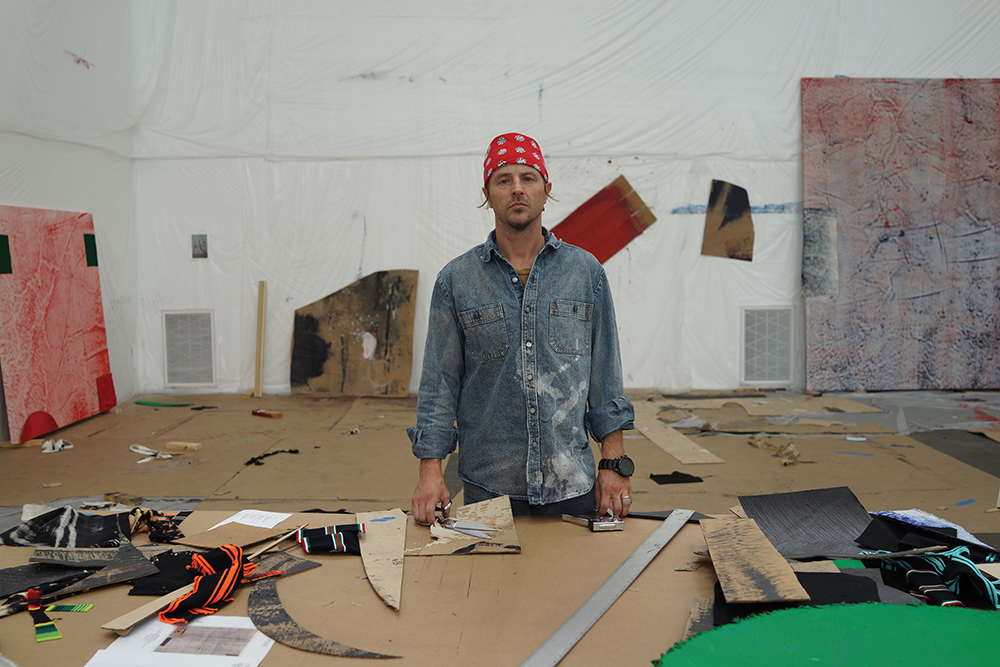
Photo by Melanie Schiff. Courtesy of Sterling Ruby Studio and Gagosian Gallery
ON WAR AND POETRY WITH STERLING RUBY
By Yan Céh
Rediscover our interview with Sterling Ruby from our issue #74.
Sterling Ruby embodies the New. Vibrant as the color pink he loves so well, he joined us to celebrate Art by creating a stunning cover for this issue of Crash: like a new spirit born in ancient times, like Beauty rising from the ruins or emerging from a cave. In these troubled times here in Paris, Ruby reminds us that Art is like a Diamond, shining through everything everywhere. In a way, “Ruby” is also the name of a precious gem, and “Sterling” sounds like a penny… “Pennies from Heaven” sings Billie Holiday. Sterling Ruby is a charming blend of these ideas; but, first of all, he is an artist, a believer, a simple man living his life as though it were a dream. And sharing that dream with us here and now.
How did your childhood impact your practice as an artist ?
I grew up in a small town. There was craft, but there wasn’t much else. I didn’t get exposed to “fine art” or “high culture” until I finally went to a small college to study art. Back then all I wanted to do was escape, but now that some time has passed, I’ve come to realize that so many of my preoccupations and aesthetics, like my quilts and textiles, camouflage, and stove sculptures all come directly from my childhood.
How your « military » background affect your work and why?
I don’t know really, I was born on an American military base in Germany, and I have lived in the United States for almost all of my life…maybe that is enough.
Your installation at Gagosian Gallery, Le Bourget seem connected to weapons, military submarines. So the sculptures are a bit frightening or intimidating while and the textile works , FLAGS, are very soft and dreamy. Did you want to create such contrast?
The sculptures are made from a de-accessioned U.S. submarine that was being scrapped for recycling. I didn’t know what I was going to do with it at first, but I knew that it had potential. As I started to cut into the submarine the forms became unrecognizable, it turned into an abstraction, it was foreign. The studio lot started to resemble a massive military machine graveyard. I welded engine blocks and pipes onto the scrapped and chopped-up fragments from the submarine creating a new hybrid sculpture. I started thinking about the sculptures as an allegory of stalled evolution, that the material components were being dragged out of the ocean, like they were attempting to continue to move, but couldn’t. I always return to the idea of the “frozen” gesture, especially when it comes to art history, or even politics, and that is what I wanted these things to represent. The bleached out DEEP FLAG tapestries are meant to resemble the American flag. They are quilts become large, but they have this sense of melancholy about them. And yes, it was very much an intentional collision of the hard and the soft.
You have also placed soft sculptures on the floor of Gagosian gallery at Le Bourget, the Candles. Why candles?
The candles suggest a vigil or a wake, commemorating something that has passed away. And they too act as a foil for the black matte austerity of the machine sculptures.
Did you want to create a feeling of danger in the show?
SR: There is that latent energy there. I am always working on trying to attain some sense of instability in the way the work is viewed and interpreted.
What is for you the importance of pink color in your recent works?
I like pink, it’s hot.
Is the size of the DEEP FLAG tapestries something important in the way you imagine them? A way of them being there in a powerful way, like landscapes?
I envision them as these intimate quilts that grew into these massive “Grateful Dead” backdrops. They should envelop you, like landscapes, they should take up your whole perspective. You should be able to get lost in them.
You were briefly a teaching assistant for Mike Kelley. What did it mean for you, did he have an influence on you?
Mike’s work addressed America’s obsession with bad behavior, and that is something that I found very influential as a younger artist. Mike could take the “all-American”, religion and family values, arts and crafts and turn it on its head. My work exploits a similar tension… American violence, bad behavior, those drives for power and the failure to come to terms with the social ills they can cause. I try to point out the shame of the American dynamic, to show the futility of trying to maintain control, the embarrassment that takes over when it is obvious that there is no control. But, in comparison I am a totally different artist than Mike was. We were friends, but I don’t think either of us thought that we made work similar to each other.
Did he give you any good advice?
He told me to keep as much of my own work as possible, to collect myself.
Do you have a connection with other Californian artists such as Chris Burden for example ? Very political artists? Or other Californian artists?
When I was starting to work on my recent series of mobile sculptures, I immediately thought of Chris Burden, and Jason Rhoades and Mike as well, Californian artists who were thinking about the weight of things, systems of balance. For Burden, there was a very distinct drive to take things that don’t weigh the same, and to see how he could get to a point where it levels up. I think about Chris’ work in relation to the US justice system, the iconographic image of justice.
There’s this series of scrap-metal sculptures. Many of which seem to be shaped like guns. You stayed at the Chinati Foundation in Marfa, Texas, not very far from the Mexican border. Can you tell us more about this inspiration?
It is hard to be in that place, along the border, and not feel this tension. It is a conflict area, a police state. I got stopped every time I came across the border, they always put the dogs in my car. So the welded metal sculptures were about the US, and guns, I made them in one of Judd’s old studios. I could look out the window of the studio and see the border patrol. I was also thinking about the state of American industry…from a material perspective.
Your new paintings on view at Gagosian on Rue de Ponthieu have titles like TCOM KUWAIT, Jalalabad, SARI SANG and DURAND LINE. How do you see them in relation to war zones and conflict areas?
These YARD paintings are made on the ground of the studio so each brush stroke picks up the surface of the ground. The canvas shifts during each pass leaving a silkscreen effect of off registration. They also have this aura of landscapes or maps seen from above. For a while now I have been considering works in the studio as flipped or upturned topographies. The collage elements play with the idea of borders and weight, they don’t move across the interior of the canvas like the BC series did, but instead are pressed up against the paintings borders or boundaries in a way using formalism to allude to boundaries, borders and buffer zones. These kinds of top down vantage points are akin to surveillance footage or US aerial reconnaissance from Iraq or Afghanistan. The aerial footage keeps us at a distance. There is a disconnect.
You also have a strong connection to clothes, denim fabric for example. How do you see the connection between your art and clothes ?
My mother gave me a sewing machine when I was twelve. I was into music and the punk scene and I would make my own clothes. So fashion was one of the first ways I understood aesthetic culture. I constantly return to the idea of the utilitarian versus a non-utilitarian in my work. I think about the Bauhaus period and the prolific and generous way those artists worked through their materials.
Can you tell us about your friendship with Raf Simons, and how you work together?
I have been friends with Raf for over a decade. He came to do a studio visit more than ten years ago and we had an instant connection. I am a huge admirer not only of him as an artist, but also of his work ethic. I’ve been making my own shirts and pants using remnants of hand dyed and bleached textiles that were from previous sculptures and paintings. This was somewhat of a catalyst for us working together in such depth. I was of course worried that working together on such a huge undertaking could change that. We were very cognizant of previous artist / designer collaborations, but we wanted to do more than a collaboration. We wanted to do a full collection. I think we were both surprised how natural it felt, we turned both of our studios into one, Los Angeles and Antwerp. We made drawings, hand bleached, painted and dyed fabrics. We rendered designs and graphics, texted, called, emailed and racked up a huge shipping bill. We were sending things back and forth day in, day out…for months. We just spent the last two weeks hanging out together in Paris, which was nice. I’m very excited to see what he does next.
